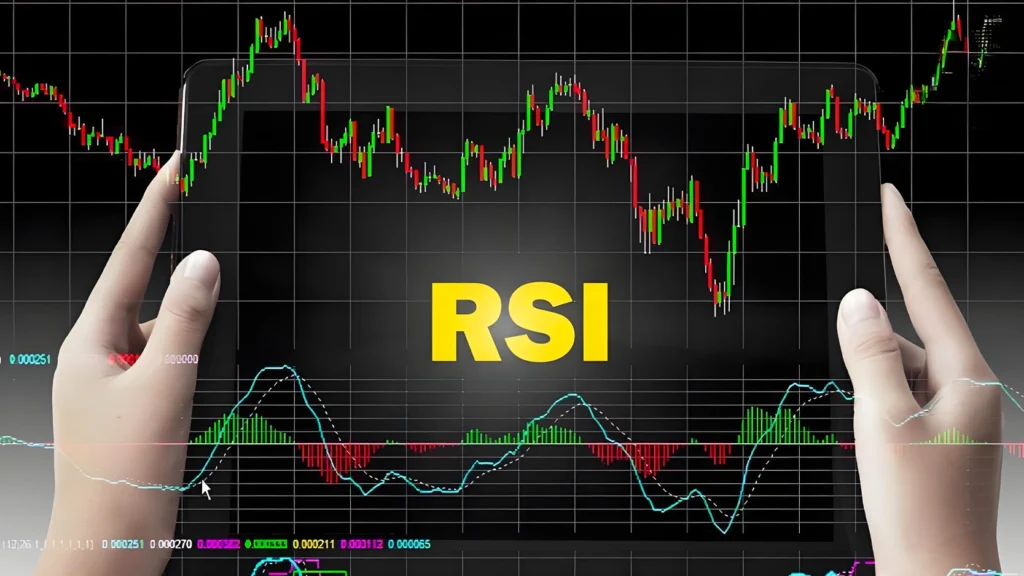What Are the Key Things You Need to Know Before Investing in a Trust Fund?
In the information-saturated world of finance, various investment terms can be overwhelming. Among them, “trust fund” is undoubtedly one of the most frequently mentioned, whether in recommendations from bank relationship managers or in financial news coverage, it seems to appear everywhere. However, behind this seemingly familiar term, its true meaning and operational model remain a mystery to many. Is it a financial product, or a legal arrangement? Why does it attract the attention of millions of investors worldwide? To become a savvy investor, the first task is to clarify the basic concepts and build a solid knowledge foundation.
What Exactly Is a Trust Fund?
In the Chinese context, the term trust fund is often used to refer to two concepts that are related yet fundamentally different. Failing to distinguish between them can lead to misunderstandings on the investment journey. One refers to a financial product that pools capital from the public for investment purposes, commonly known as a “fund”. The other refers to a legally binding “trust” arrangement used for estate planning and wealth transfer. To gain a clear overall understanding, it is essential to examine each of these two concepts separately.
A Professional Choice for Pooling Funds: Unit Trust Fund (Unit Trust)
In an investment context, when people talk about a “trust fund”, they are most often referring to a unit trust fund which is commonly known as a mutual fund in Taiwan. At its core, it is a form of collective investment scheme. Its operating model involves pooling funds from numerous investors into a large capital pool, which is then managed by a professional fund management team. The managers invest in a diversified portfolio aligned with the fund’s stated objectives and strategies, which may include equities, bonds, real estate, or other financial instruments.
Investors participate by purchasing “units” or “shares” of the fund, thereby becoming its beneficiaries. The key appeal of this model lies in its ability to give ordinary investors a relatively low entry threshold, giving access to two major advantages once exclusive to large institutions: diversification and professional management. While an individual investor might find it difficult to purchase dozens of different stocks on their own to spread risk, investing in a fund allows even a modest amount of capital to instantly own a basket of assets.
Wealth Succession as a Legal Contract: The True Nature of a Trust
Unlike funds that serve as an investment vehicle, a “trust” is itself a legally binding arrangement. According to the definition in the “Trust Law”, a trust relationship refers to a situation in which the owner of property (the settlor), for a specific purpose or for the benefit of a beneficiary, transfers ownership of the property to a trustee, who then manages and disposes of the property in accordance with the terms of the trust agreement.
This legal structure involves three key roles:
- Settlor: The individual or legal entity who provides the assets and establishes the trust agreement.
- Trustee: The professional institution (such as a bank or trust company) or individual responsible for managing the trust assets in accordance with the agreement. The trustee has a legal duty to act loyally in the best interests of the beneficiary.
- Beneficiary: The party entitled to benefit from the trust, which may be the settlor themselves or designated family members, descendants, charitable organizations, and so on.
The trust’s most critical characteristic is the independence of trust property. Once assets are placed into a trust, they are legally separated from the settlor’s personal assets. This means that, in principle, the trust property will not be affected by the settlor’s personal debts or legal disputes, thereby achieving powerful asset protection and wealth succession effects. This is fundamentally different from simply purchasing an investment fund, which mainly seeks investment returns and does not provide such legal asset segregation. The applications of a trust are extensive, ranging from family wealth succession and estate planning to philanthropic endeavors, all serving as stages where it can play a significant role.
Why Are Unit Trusts a Popular Investment Choice?
For decades, unit trusts have remained a mainstream option for individual investors worldwide. What exactly gives them the enduring appeal to transcend different markets and eras, consistently attracting both beginners and seasoned investors? The answer lies in their ability to effectively address the three major challenges most individuals face when investing alone: limited capital, lack of time, and barriers in professional knowledge.
What Makes Unit Trusts Attractive to Investors?
The widespread popularity of unit trusts largely stems from their built-in advantages, which significantly lower the barriers for individuals to participate in professional investing.
The first advantage is professional investment management. Investing is an activity that requires considerable time and effort, from analyzing macroeconomic trends to examining the financial statements of individual companies is a process that can be both complex and tedious. Unit trusts place this work in the hands of full-time professional fund management teams. Investors can benefit from these experts’ knowledge and experience without having to manage their portfolios themselves, saving substantial time and effort in research.
The second advantage is effective risk diversification. There’s a well-known saying in the investment world: “Don’t put all your eggs in one basket”. Unit trusts are the perfect embodiment of this principle. Because a fund pools substantial amounts of capital, the fund manager can spread investments across dozens, or even hundreds, of different securities, industries, or countries. This significantly reduces “unsystematic risk” which is the risk arising from poor performance of a single company or the downturn of a specific industry where something that is difficult for individual investors with limited capital to replicate.
Furthermore, it provides a convenient gateway to reach global investment opportunities. For ordinary investors, directly investing in overseas markets may involve regulatory restrictions, information asymmetry, or complex trading procedures. Unit trusts break down these barriers, allowing investors to easily participate in markets around the world, whether it is the established equity markets in Europe and the US or the high potential emerging market bonds, through a one stop allocation.
Finally, a relatively low entry threshold is also a major attraction. To build a diversified portfolio similar to that of a given fund on your own, even purchasing only the minimum tradeable unit of each security could require a substantial amount of capital. By pooling funds from many investors, unit trusts allow individuals to indirectly hold this large and diversified portfolio with a relatively small amount of money, making professional investing far more accessible.
What Hidden Costs Should You Watch Out for When Investing in Unit Trusts?
While unit trusts offer numerous conveniences, enjoying professional services inevitably comes at a price. These costs will directly or indirectly erode your investment returns, so it is essential to have a clear understanding of the fee structure before committing your capital. Broadly speaking, fund expenses can be categorized into two types:
The first type is external charges, which are fees charged directly to investors at the time of the transaction. The most common example is the subscription fee. When you purchase a fund, the sales channel (such as a bank or fund platform) will charge a fee based on a percentage of the subscription amount. For equity funds, the rate is usually around 3 percent, while for bond funds it is about 1.5 percent, though many channels often offer discount promotions.
The second type is the more subtle internal charges. These fees are not paid separately by the investor but are deducted directly from the fund’s total assets on a daily basis. This means that the net asset value (NAV) you see has already been reduced by these charges. The main internal fees include:
- Management Fee: This is paid to the fund company and its management team as compensation for managing the fund’s assets. It is the largest component of the internal charges, with an annual rate usually ranging from 1% to 2.5%.
- Custody Fee: The investor’s assets are not held directly by the fund company but are kept with an independent third-party financial institution (usually a bank) for safekeeping. This fee is paid to the custodian, with an annual rate of around 0.2%.
- Trustee Fee: If you purchase a fund through a bank channel, the bank, acting as the trustee of the trust agreement, will usually charge a trustee fee when you redeem the fund. This is based on the holding period, with an annual rate of about 0.2%.
It is essential to understand these fees because market fluctuations are unpredictable, but these costs are certain. When selecting a fund, in addition to focusing on its investment strategy and past performance, the expense ratio should also be taken into account.
Facing With the Vast Array of Market Choices, How Do Unit Trusts Differ From ETFs?
In the past, traditional trusts funds (unit trusts) were the go-to choice for retail investors. However, with financial market innovation, a new instrument known as the “Exchange-Traded Fund” (ETF) has rapidly emerged and become a mainstream option today. For modern investors, choosing between a traditional unit trust and an ETF has become an essential lesson. To make an informed decision, it is crucial to first understand their key differences in core mechanisms.
Trading Method and Liquidity
The most straightforward difference between the two lies in where and how they are traded. Like stocks, ETFs are listed on stock exchanges. This means that during market trading hours, investors can buy and sell them at any time through their brokerage accounts, with prices fluctuating in real time just like individual stocks. This trading model gives ETFs high intraday liquidity and flexibility, allowing investors to quickly adjust positions based on market movements.
In contrast, traditional unit trusts are purchased and redeemed through channels such as banks or fund platforms. Their trading price does not fluctuate in real time but is based on the “Net Asset Value (NAV)” calculated after the market closes each day. Regardless of the time an order is placed during the day, the final transaction will be executed at that day’s single closing NAV. As a result, the buying and selling process is relatively longer, with settlement often taking several business days, and the liquidity and flexibility are naturally less than those of ETFs.
Management Style and Transparency
The difference in trading methods reflects a fundamental divergence in investment philosophy between the two. Most traditional unit trusts adopt an actively managed approach. The core objective is for fund managers to outperform the market average (i.e., the benchmark index) through in-depth research, active stock selection, and market timing. This model grants fund managers greater decision-making authority, but it also means that portfolio holdings change more frequently, transparency is relatively lower, and management fees tend to be higher due to the significant research resources required.
In contrast, the vast majority of ETFs on the market adopt a passively managed approach. They do not aim to “beat the market” but instead seek to “replicate the market”, meaning they precisely track a specific market index, such as the S&P 500 in the US or the Taiwan 0050 Index. Since their portfolios are fully aligned with the index constituents, the operations are relatively straightforward, the holdings are highly transparent (often disclosed daily), and the management fees are significantly lower compared to actively managed funds.
Related Recommendation: What Is the S&P 500 Index? How to Track the Pulse of the US Stock Market?
Comparison Table of Unit Trusts and ETFs
To help you clearly understand the differences between the two, here is a quick comparison table:
| Feature | Unit Trusts | ETF |
| Trading Method | Traded once daily at the closing NAV through banks or fund platforms | Listed on stock exchanges, can be traded anytime during market hours |
| Transaction Costs | Higher internal costs such as subscription fees and management fees | Same transaction fees as stocks, with generally lower internal management fees |
| Management Style | Mostly actively managed, aiming to outperform the market | Mostly passively managed, aiming to track index performance |
| Transparency | Portfolio holdings are usually disclosed quarterly or semi-annually, with lower transparency | Portfolio holdings are usually disclosed daily, with high transparency |
| Liquidity | Lower, subscription and redemption may take several business days to complete | High, can be liquidated at any time during trading hours |
| Suitable For | Investors who prefer to fully delegate investment decisions to professionals and seek returns that outperform the market | Investors who prefer low cost, high transparency, and aim to capture market-average returns |
Master Trust Fund Knowledge to Lay the Foundation for Your Financial Journey
From “unit trust funds” as investment tools to “trusts” as legal arrangements, clearly distinguishing between the two is the key first step in financial planning. We understand that the core advantages of investment funds lie in providing individual investors with a convenient way to access professional management, risk diversification, and global exposure.
However, no investment tool is flawless. We must also recognize the various fees embedded within, as these costs are a certain factor that will affect long-term returns. At the same time, with ETFs having become mainstream in today’s market, gaining a deeper understanding of their fundamental differences from traditional funds in terms of trading model, cost structure, and management philosophy will help you select the most suitable tool based on your own investment objectives and risk tolerance.
Mastering this foundational knowledge is not the end of your financial journey, but a crucial starting point. It establishes a solid framework that enables you to approach the various opportunities and challenges in future markets with greater confidence in your analysis and judgment. When you are ready to put this knowledge into practice, a trustworthy platform will be an indispensable partner. The purpose of CashbackIsland is not only to help you save costs on every trade, but also to stand alongside you on your long financial journey, growing together by providing professional-grade calculation tools and real-time market intelligence.
CashbackIsland continuously updates its trading education resources. Traders can visit the “CashbackIsland Education Guide” section to gain more forex knowledge and investment skills.
Frequently Asked Questions
Q1. What Is the Fundamental Difference Between a “Trust” and a “Fund”?
They are essentially different in nature. A “trust” is a legally binding arrangement for asset management, in which the settlor transfers assets to the trustee to manage for the benefit of designated beneficiaries. Its primary purpose is asset protection and wealth succession. A “fund,” on the other hand, is a collective investment vehicle that pools capital from multiple investors and is managed by professional fund managers who invest in assets such as stocks and bonds, with the primary goal of generating investment returns.
Q2. After Investing in a Unit Trust, Does the Investor Have Direct Control Over the Assets in the Fund?
No. Investors purchase “units” of the fund, not direct ownership of the stocks or bonds held by the fund. All investment decisions, such as which assets to buy or sell and when, are made by the professional fund management team. Investors have no direct control over the specific investment portfolio of the fund.
“Trading financial derivatives carries a high risk and may result in capital loss. The content of this article is for informational purposes only and does not constitute investment advice. Please make decisions cautiously based on your personal financial situation. CashbackIsland assumes no responsibility for any trading-related consequences.”
Related articles
-
In the realm of modern financial market analysis, whether it’s the fast-changing forex market, the highly volatile cryptocurrency space, or traditional stock indices, technical analysis plays an indispensable role. Among the many technical indicators, the Relative Strength Index (RSI) is undoubtedly one of the most classic and widely used tools....2025 年 9 月 4 日
-
In today's environment of persistently low interest rates combined with inflationary pressures, simply depositing money in the bank is no longer sufficient to preserve the future value of your assets. An increasing number of investors are seeking more proactive ways to grow their wealth, shifting from traditional savers to active...2025 年 8 月 13 日
-
In financial market terminology, “bottom-fishing” is a highly enticing yet challenging concept. It refers to an investment strategy aimed at buying assets that have undergone significant price declines and are believed to be undervalued, with the expectation that their prices will eventually rebound sharply. This strategy embodies the ultimate expression...2025 年 8 月 13 日













